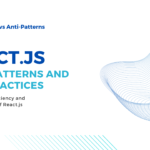Embarking on a journey in Node.js and Typescript developer role? Whether you’re aiming for a career change or gearing up for an upcoming interview, thorough preparation is key. To assist you in your readiness, we’ve compiled an extensive array of Node.js and Typescript interview questions that are frequently encountered in various interviews. Tailored for both developers and seasoned professionals, these questions span a broad spectrum, providing a comprehensive understanding of Node.js and Typescript.
In this article, we’ll organize the interview questions into two distinct categories: Fundamental and Expert Interview Questions. The fundamental section will delve into the essential concepts of Node.js and Typescript, offering a solid foundation for your understanding. On the other hand, the expert questions will navigate through more advanced topics, ensuring a thorough exploration of your expertise. By immersing yourself in these questions and grasping their solutions, you’ll be well-prepared to confidently showcase your knowledge during your Node.js and Typescript developer interview. Let’s dive in!
Fundamental Interview Questions
1. What is Node.js and where can you use it?
Node.js is an open-source, cross-platform JavaScript runtime environment and library used to run web applications outside the client’s browser. It is perfect for data-intensive applications as it uses an asynchronous, event-driven model. You can use Node.js to create various types of applications such as real-time web applications, network applications, general-purpose applications, and distributed systems.
2. Why use Node.js?
Node.js offers several advantages that make it a popular choice for web development:
- Speed: Node.js is known for its fast processing speed, making it ideal for applications that require quick response times.
- Non-blocking: Node.js uses a non-blocking, event-driven architecture, allowing it to handle multiple requests simultaneously and efficiently.
- Unified language and data type: Node.js uses JavaScript as its programming language, making it easy for developers to write both client-side and server-side code in the same language.
- Asynchronous programming: Node.js allows developers to write asynchronous code, which means that multiple operations can be executed concurrently without blocking the execution of other operations.
- Scalability: Node.js is highly scalable and can handle a large number of concurrent connections with minimal resources.
- Vast ecosystem: Node.js has a rich ecosystem with a wide range of modules and libraries available through the Node Package Manager (NPM), making it easy to add functionality to your applications.
3. How does Node.js work?
Node.js uses a single-threaded, event-driven architecture that allows it to handle multiple requests simultaneously without blocking the execution of other operations. Here is a high-level overview of how Node.js works:
- Clients send requests to the Node.js server to interact with the web application.
- Node.js retrieves the incoming requests and adds them to the event queue.
- The event loop processes the requests one-by-one and checks if they require any external resources.
- Simple requests (non-blocking operations) are processed immediately, while complex requests are assigned to a separate thread from the thread pool.
- Once a task is completed, the response is sent back to the event loop and then returned to the client.
This asynchronous, non-blocking nature of Node.js allows it to handle a large number of concurrent connections efficiently.
4. What is the role of the package.json file in Node.js?
The package.json file is the heart of a Node.js project. It contains metadata about the project, including its name, version, dependencies, and other relevant information. The package.json file is used by the Node Package Manager (NPM) to manage the project’s dependencies and scripts.
{
"name": "express-handlebars-app",
"version": "1.0.0",
"description": "A simple Node.js and Express app with Handlebars for views",
"main": "index.js",
"scripts": {
"start": "node index.js",
"dev": "nodemon index.js",
"test": "echo \"Error: no test specified\" && exit 1"
},
"keywords": ["node", "express", "handlebars", "cors", "http"],
"author": "Your Name",
"license": "MIT",
"dependencies": {
"express": "^4.17.1",
"express-handlebars": "^5.3.2",
"cors": "^2.8.5",
"http": "^0.0.1"
},
"devDependencies": {
"nodemon": "^2.0.15"
}
}By specifying the dependencies in the package.json file, developers can easily install all the required packages for their project using the npm install command. The package.json file also allows developers to define custom scripts for tasks such as running tests, building the project, or starting the server.
5. How do you import external libraries in Node.js?
In Node.js, you can import external libraries using the require() function. The require() function is a built-in Node.js function that allows you to include modules (libraries) in your code. To import a module, you simply pass the module’s name as a parameter to the require() function.
For example, to import the express module, you would use the following code:
const express = require('express');
...Once the module is imported, you can use its functions and features in your code.
6. What are the core modules in Node.js?
Node.js provides a set of core modules that are available out of the box and can be used without installing any additional packages. Some of the core modules in Node.js include:
http: Provides classes, methods, and events to create a Node.js HTTP server.fs: Includes events, classes, and methods to deal with file I/O operations.path: Provides utility functions for working with file and directory paths.util: Includes utility functions useful for developers.events: Provides an event-driven architecture for handling and emitting events.url: Includes methods for URL parsing.querystring: Provides methods to work with query strings.stream: Includes methods to handle streaming data.zlib: Provides methods to compress or decompress files.
These core modules provide the basic functionality needed for many web applications.
7. What is the difference between synchronous and asynchronous programming in Node.js?
In synchronous programming, each operation is performed one after the other, blocking the execution of further code until the current operation is completed. In contrast, asynchronous programming allows multiple operations to be executed concurrently without blocking the execution of other operations.
const fs = require('fs');
// Synchronous file reading
try {
const data = fs.readFileSync('example.txt', 'utf-8');
console.log('Synchronous File Content:', data);
} catch (error) {
console.error('Error reading file synchronously:', error.message);
}Node.js is known for its asynchronous programming model, which allows it to handle multiple requests simultaneously and efficiently. Instead of waiting for an operation to complete before moving on to the next one, Node.js uses callbacks or promises to handle the completion of asynchronous operations.
const fs = require('fs');
// Asynchronous file reading
fs.readFile('example.txt', 'utf-8', (error, data) => {
if (error) {
console.error('Error reading file asynchronously:', error.message);
} else {
console.log('Asynchronous File Content:', data);
}
});| Feature | Synchronous Programming | Asynchronous Programming |
|---|---|---|
| Blocking Nature | Blocking: Execution waits for each operation to complete before moving to the next. | Non-Blocking: Execution continues without waiting for each operation to complete. |
| Code Structure | Linear: Code is structured sequentially. | Callback-Based: Code often involves callbacks to handle asynchronous operations. |
| Performance Impact | Potential Blockage: If one operation takes time, the entire process is delayed. | Efficient: Other operations can proceed while waiting for I/O or other non-blocking tasks. |
| Error Handling | Simple: Errors are often straightforward to catch and handle. | Callback Error Handling: Requires careful handling of errors through callbacks or additional mechanisms. |
8. What is the purpose of callback functions in Node.js?
Callback functions are a fundamental concept in Node.js and are used to handle asynchronous operations. In Node.js, many APIs and functions are designed to be asynchronous, meaning that they don’t block the execution of the program while waiting for a response from an external resource.
To handle the result of an asynchronous operation, a callback function is passed as an argument to the asynchronous function. Once the operation is complete, the callback function is called with the result as its parameter. This allows the program to continue executing other tasks while waiting for the asynchronous operation to complete.
Here’s an example of using a callback function in Node.js:
fs.readFile('file.txt', 'utf8', function(err, data) {
if (err) {
throw err;
}
console.log(data);
});
In this example, the readFile function reads the contents of a file asynchronously. Once the file is read, the callback function is called with any error as the first parameter and the data as the second parameter. The callback function then logs the data to the console.
9. What is the role of the event loop in Node.js?
The event loop is a crucial component of Node.js that allows it to handle multiple concurrent operations efficiently. It is responsible for processing events and executing the corresponding event handlers.
In Node.js, when an asynchronous operation is initiated, it is added to the event queue. The event loop continuously checks the event queue and processes the events one by one. When an event is processed, its associated callback function is executed.
The event loop works in a loop, continuously checking for events and executing their callback functions. This allows Node.js to handle multiple requests simultaneously without blocking the execution of other operations.
10. What is the role of the Node Package Manager (NPM) in Node.js?
The Node Package Manager (NPM) is a package manager for Node.js that allows developers to easily install, manage, and update packages and modules for their Node.js projects. It provides a vast ecosystem of packages and modules that can be easily integrated into Node.js applications.
With NPM, developers can install packages from the NPM registry, which contains thousands of open-source packages contributed by the Node.js community. The registry includes packages for a wide range of functionalities, such as web frameworks, database connectors, utility libraries, and more.
NPM also allows developers to publish their own packages and share them with the community. This makes it easy to reuse code and collaborate with other developers on Node.js projects.
Expert Interview Questions
1. What are the advantages of using Typescript with Node.js?
Typescript is a superset of JavaScript that adds static typing and other advanced features to the language. When used with Node.js, Typescript offers several advantages:
- Type safety: Typescript introduces static typing, which helps catch errors and bugs during development. It provides compile-time type checking and allows developers to define interfaces and types for their code.
- Enhanced productivity: Typescript provides advanced features such as classes, modules, and decorators, which can improve code organization and maintainability. It also offers better tooling and editor support, making it easier to write and debug code.
- Better code organization: Typescript supports the use of modules and namespaces, allowing developers to organize their code into logical units. This makes it easier to manage large codebases and promotes code reuse.
- Improved collaboration: Typescript’s static typing and clear interfaces make it easier for teams to collaborate on large projects. It provides better documentation and reduces the chances of miscommunication or misunderstandings between team members.
- Compatibility with existing JavaScript code: Typescript is a superset of JavaScript, which means that existing JavaScript code can be gradually migrated to Typescript. This allows developers to take advantage of Typescript’s features without having to rewrite their entire codebase.
2. What are the key differences between JavaScript and Typescript?
JavaScript and Typescript are closely related, but they have some key differences:
- Static typing: Typescript introduces static typing, allowing developers to define types for variables, function parameters, and return values. JavaScript, on the other hand, is dynamically typed, meaning that types are determined at runtime.
- Advanced features: Typescript adds several advanced features to JavaScript, such as classes, interfaces, modules, and decorators. These features make it easier to write and maintain large codebases and promote code reuse.
- Tooling and editor support: Typescript has better tooling and editor support compared to JavaScript. It provides features like code completion, type inference, and error checking, which can improve productivity and reduce bugs.
- Compatibility: Typescript is a superset of JavaScript, which means that existing JavaScript code can be used in Typescript projects without any modifications. Developers can gradually migrate their codebase to Typescript and take advantage of its features.
3. How does Typescript improve code quality and maintainability?
Typescript offers several features that can improve code quality and maintainability:
- Static typing: Typescript introduces static typing, which helps catch errors and bugs during development. The compiler performs type checking at compile time, reducing the chances of runtime errors.
- Code organization: Typescript supports classes, modules, and namespaces, which allow developers to organize their code into logical units. This promotes code reuse and makes it easier to manage and maintain large codebases.
- Interfaces: Typescript allows developers to define interfaces, which provide a clear definition of the expected shape of an object. This improves code documentation and makes it easier to collaborate with other developers.
- Tooling support: Typescript has excellent tooling support, including features like code completion, type inference, and error checking. These tools help developers write clean and error-free code, improving code quality and maintainability.
- Strict mode: Typescript has a strict mode that enforces stricter rules and best practices. This helps catch potential errors and promotes writing clean and maintainable code.
4. How does Typescript handle transpilation and compilation?
Typescript code is transpiled into JavaScript code before it can be executed by the browser or the Node.js runtime. Transpilation is the process of converting Typescript code into equivalent JavaScript code.
The Typescript compiler (tsc) is responsible for transpiling Typescript code. When the compiler is run, it reads the Typescript files (.ts or .tsx) and generates equivalent JavaScript files (.js). The generated JavaScript code can then be executed by the browser or the Node.js runtime.
The Typescript compiler supports various options and configurations that can be specified in the tsconfig.json file. This file defines the project’s compiler options, such as the target ECMAScript version, module system, and output directory.
Transpilation allows developers to write code in Typescript, taking advantage of its features, and then convert it into JavaScript that can be understood by browsers and the Node.js runtime.
5. How does Typescript support object-oriented programming (OOP)?
Typescript is designed to support object-oriented programming (OOP) principles and provides several features that make it easier to write object-oriented code:
- Classes and inheritance: Typescript supports classes and inheritance, allowing developers to define reusable blueprints for objects. Classes can have properties, methods, and constructors, and can be extended by other classes using the
extendskeyword. - Interfaces: Typescript allows developers to define interfaces, which provide a clear definition of the expected shape of an object. Interfaces can be used to define contracts that classes must adhere to, promoting code reuse and maintainability.
- Access modifiers: Typescript supports access modifiers such as
public,private, andprotected, which control the visibility and accessibility of class members. This helps enforce encapsulation and improves code robustness. - Polymorphism: Typescript supports polymorphism, allowing subclasses to override methods defined in their parent classes. This enables developers to write code that can work with objects of different types, promoting code flexibility and reuse.
These features make Typescript a powerful tool for writing object-oriented code in a type-safe and maintainable manner.
6. How does Typescript handle type checking?
Typescript performs type checking at compile time, helping catch errors and bugs before the code is executed. Here’s how Typescript handles type checking:
- Static typing: Typescript introduces static typing, allowing developers to define types for variables, function parameters, and return values. The compiler then performs type checking to ensure that variables are used correctly and that functions are called with the correct arguments and return the expected types.
- Type inference: Typescript has a powerful type inference system that can deduce the types of variables based on their usage. This reduces the need to explicitly specify types and makes the code more concise.
- Type annotations: Developers can explicitly specify types using type annotations. Typescript supports various types, including primitive types like
string,number, andboolean, as well as complex types like arrays, objects, and functions. - Union and intersection types: Typescript allows developers to define union and intersection types, which provide additional flexibility when working with multiple types.
- Type guards: Typescript provides type guards, which are runtime checks that allow developers to narrow down the type of a variable based on certain conditions. This can be useful when working with union types or dynamically-typed values.
By performing type checking at compile time, Typescript helps catch errors early and promotes code robustness and maintainability.
7. What is the role of decorators in Typescript?
Decorators are a feature of Typescript that allows developers to add metadata and modify the behavior of classes, methods, and properties. Decorators are declared using the @ symbol followed by the decorator name.
Decorators can be used for various purposes, such as:
- Logging: Decorators can be used to log method calls or track the execution of certain functions.
- Validation: Decorators can be used to validate the input parameters of a method or perform other types of input validation.
- Authorization: Decorators can be used to enforce authorization rules and restrict access to certain methods or properties.
- Dependency injection: Decorators can be used to automatically inject dependencies into classes or methods.
Decorators are a powerful tool for adding cross-cutting concerns to your code and promoting code modularity and reusability.
8. How does Typescript handle module management?
Typescript has built-in support for modules, which allow developers to organize their code into reusable and maintainable units. Modules provide a way to encapsulate related code and expose only the necessary parts to other modules.
Typescript supports both commonJS and ECMAScript modules, allowing developers to choose the module system that best suits their needs. CommonJS modules are widely used in Node.js applications, while ECMAScript modules are a standard module system supported by modern browsers.
To import and export modules in Typescript, you can use the import and export keywords. For example, to import a module, you would use the following syntax:
import { SomeClass, someFunction } from './path/to/module';
You can also use default exports, which allow you to export a single value from a module:
export default SomeClass;
Modules provide a way to organize and reuse code effectively, making it easier to manage large codebases and promote code maintainability.
9. How does Typescript handle type compatibility with JavaScript libraries?
Typescript provides a feature called declaration files (.d.ts) that allows developers to describe the types and interfaces of existing JavaScript libraries. Declaration files provide type information for JavaScript code, enabling Typescript’s static type checking to work seamlessly with JavaScript libraries.
Declaration files can be created manually or generated automatically using tools like dts-gen or tsd. They define the types and interfaces for the JavaScript code, allowing Typescript to perform type checking and provide code assistance for the library.
Typescript has a rich ecosystem of declaration files available through the DefinitelyTyped repository. This repository contains declaration files for thousands of popular JavaScript libraries, making it easy to integrate existing libraries into your Typescript projects.
By using declaration files, developers can leverage the power of Typescript’s static typing and type checking while working with existing JavaScript libraries.
10. What are some best practices for coding in Typescript?
When coding in Typescript, it’s important to follow best practices to ensure code readability, maintainability, and performance. Here are some best practices for coding in Typescript:
- Use strict mode: Enable strict mode in your
tsconfig.jsonfile to enforce stricter type checking and catch potential errors early. - Type all variables: Explicitly specify the types of variables using type annotations. This improves code clarity and helps the compiler catch type-related errors.
- Avoid any type: Minimize the use of the
anytype, which disables type checking for a variable. Instead, use more specific types or provide type annotations when necessary. - Use interfaces and types: Use interfaces and types to define the shape of objects and provide clear contracts for your code. This promotes code reuse and helps catch errors during development.
- Follow naming conventions: Follow consistent naming conventions for variables, functions, classes, and other code elements. This improves code readability and makes it easier for other developers to understand your code.
- Avoid unnecessary type assertions: Use type assertions (
as) sparingly and only when necessary. Unnecessary type assertions can hide potential type errors and make the code harder to maintain. - Use const and readonly: Use
constfor variables that should not be reassigned andreadonlyfor properties that should not be modified after initialization. This promotes immutability and reduces the chances of accidental modifications. - Keep functions short and focused: Break down complex functions into smaller, more focused functions. This improves code readability and makes it easier to test and maintain.
- Use strict null checks: Enable strict null checks in your
tsconfig.jsonfile to catch potential null or undefined errors. This forces you to handle optional values explicitly and reduces the chances of null-related errors.
By following these best practices, you can write clean, maintainable, and type-safe code in Typescript.
Conclusion
In this comprehensive guide, we have covered a wide range of Node.js and Typescript interview questions, from fundamental concepts to more advanced topics. By going through these questions and understanding their answers, you will be well-prepared for your Node.js and Typescript interviews.
Remember to practice answering these questions and to apply your knowledge to real-world scenarios. Good luck with your interview, and we hope this guide helps you succeed in your Node.js and Typescript career!
Happy learning!






